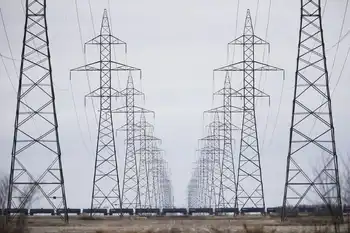Darlington Eyed As Site Of Fusion Reactor
OTTAWA -- - The federal government is considering a proposal that would commit $2.3 billion to building an experimental nuclear fusion reactor beside the Darlington nuclear plant in southern Ontario.
The $18-billion International Thermal Experiment Reactor, or ITER, would be a massive research reactor, aiming to crack the secret to creating pollution-free energy for the planet.
But an internal document from Natural Resources Canada, obtained by the Citizen, cautions that the project carries "uncertain scientific benefits" and warns that "cost overrun (is) likely."
"We've come to the conclusion that if we're really serious about attracting ITER, we will need to provide financial support," Natural Resources Minister Herb Dhaliwal told the Citizen. "This would be a very big commitment, it would be a very long-term commitment, and we have to make sure this is really the direction we want to follow in Canada. That's why I'm reviewing it closely and I'll be making a final decision within the next four to six weeks."
The concept behind ITER is to create a huge, experimental nuclear fusion reactor, subsidized by the governments of China, Japan, Russia, the European Union, the United States and, possibly, Canada. International discussions are now taking place as to whether the reactor will be located in Japan, Spain, France or Canada, and the subsidies offered by the countries in question will influence the outcome.
The ITER Canada group -- headed by former Canadian Nuclear Association president Murray Stewart and including industries and labour unions that stand to benefit from the project -- is pushing for $2.3 billion from the federal and Ontario governments over the next 30 years to help bring the project to Canada. Ontario says it will cover half of the $2.3 billion if the federal government agrees to the other half.
"The real decision in front of the federal government is: Does Canada want to participate in what will become the world's largest international co-operative science and technology project, leading to a new sustainable energy source?" Mr. Stewart said.
The attraction of the reactor -- besides the construction and scientific jobs it will bring to Ontario -- is the promise of a new source of energy if the technology succeeds.
The reactor would not actually produce energy that could flow to the power grid - in fact, it would require 100 megawatts of energy to operate - but its purpose would be to demonstrate whether a commercial reactor could be built.
Unlike conventional reactors, which produce energy by splitting atoms, the ITER reactor would work by fusing atoms together. The reactor would take deuterium (a type of hydrogen found in common water) and tritium (a radioactive waste product from Candu nuclear reactors) and fuse them together in a swirling plasma at temperatures of 100 million degrees Celsius to create energy.
After 50 years of research, existing fusion reactors have been unsuccessful in creating any significant net energy gains, but Mr. Stewart said that is because they are too small. He said the ITER reactor will produce 10 times more energy than the energy needed to create the fusion reaction.
"The science is right," Mr. Stewart said. "The question of ITER is to really prove the economic, technical, engineering feasibility of actually building a commercial power plant using this technology."
Although fusion would create no radioactive waste, Mr. Stewart said the fusion machine will become radioactive, and when the time comes to decommission the plant, 6,000 tonnes of radioactive metal will be left over, which the host country will have to handle.
Mr. Stewart said the cost of decommissioning will be shared by all the countries participating in the project. As well, he added, the ITER facility will help scientists and engineers to discover materials that are not susceptible to becoming radioactive, for use in future commercial fusion plants.
The Greater Toronto Area caucus of the Liberal party, chaired by Toronto MP Art Eggleton, passed a motion supporting federal subsidies for ITER.
But environmental groups including the Sierra Club, Greenpeace, the David Suzuki Foundation and the Pembina Institute issued an open letter to Prime Minister Jean Chr?tien yesterday opposing the project on the grounds that it is expensive, unproven and produces radioactive waste.
And the internal Natural Resources Canada document notes that the project involves "significant government spending and risk" with likely cost overruns, and that "even a technical success will not guarantee fusion to be commercially viable."
As well, the project will not help Canada to meet its Kyoto targets, since a functioning fusion power plant, even if it is possible to build one, will not be functioning anytime before 2040.
Related News

Purdue: As Ransomware Attacks Increase, New Algorithm May Help Prevent Power Blackouts
WEST LAFAYETTE - Millions of people could suddenly lose electricity if a ransomware attack just slightly tweaked energy flow onto the U.S. power grid.
No single power utility company has enough resources to protect the entire grid, but maybe all 3,000 of the grid's utilities could fill in the most crucial security gaps if there were a map showing where to prioritize their security investments.
Purdue University researchers have developed an algorithm to create that map. Using this tool, regulatory authorities or cyber insurance companies could establish a framework that guides the security investments of power utility companies to parts of the grid at greatest…




